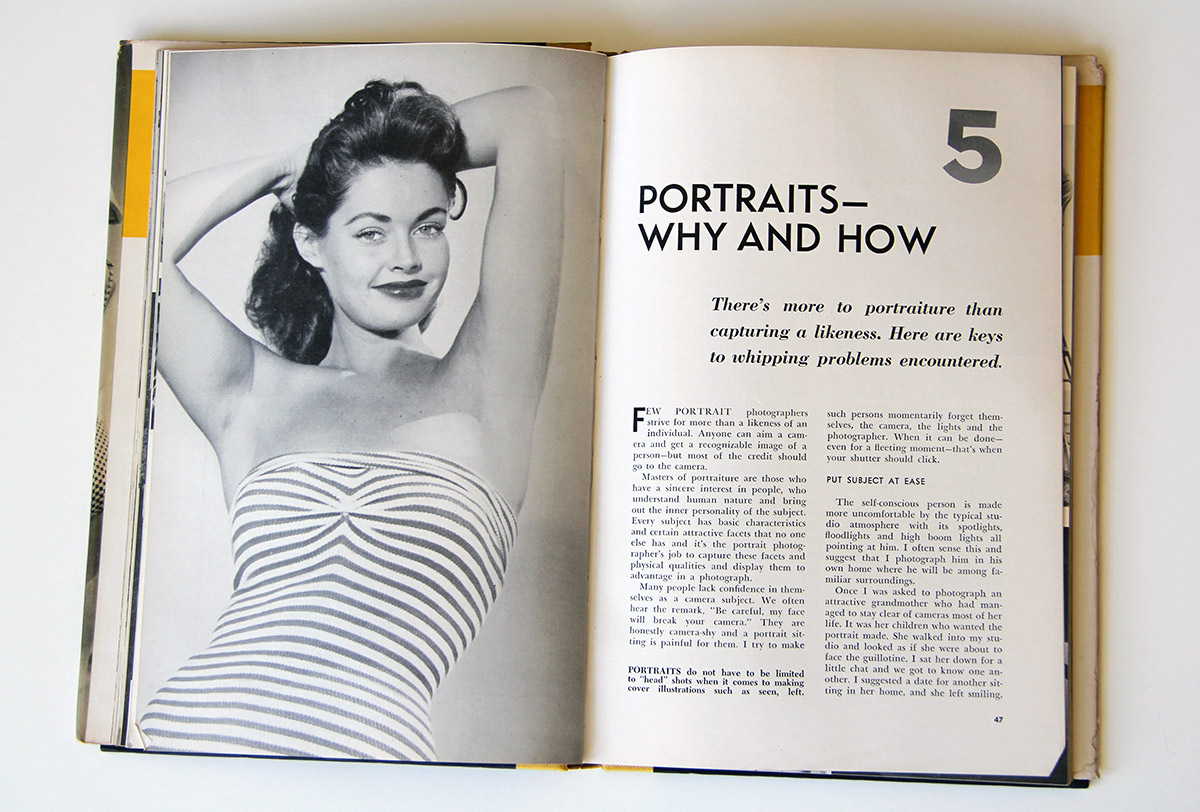Tips from Ozzie Sweet’s 1958 book ‘My Camera Pays Off’
We apply the prolific commercial photographer’s advice on taking better photos, 60 years later

Recently a friend of ours discovered, while cleaning out her mother’s storage unit, this 1958 book from prolific professional photographer Ozzie Sweet: “My Camera Pays Off.” It must have been quite useful to its former owner (her mother was an editor at a photography magazine) but after diving into Sweet’s hardcover ourselves, we also found that his advice on how to take great photos still remains evergreen almost 60 years later. And it can be applied whether you’re wielding a new Leica Q or an iPhone; while Sweet is specifically addressing budding freelance photographers who want to sell commercial photos, his advice works for people who are just taking photos for personal pleasure, hoping for a few likes. There’s no Photoshop required either, as the book was published long before the software was developed.
“I can scarcely think of a profession more wide open to newcomers than photography,” Sweet writes in the intro. “You need not to join a union, nor go to a graduate school, nor have great mechanical aptitude. You can be any size or shape, drive either a Cadillac or a bicycle, be as strange or conformist as your please—and, you can start at the age of 15 on an investment of $50.” Sweet, who passed away at the age of 94 a few years ago, worked with the famous (from Jackie Robinson and Yogi Berra to Dwight D. Eisenhower and Albert Einstein) as well as the unknown, and sold around 1,800 covers to national magazines. Here, we’ve pulled together some of his eye-opening tips that can be easily incorporated into your next snap.

“I try to make [people] momentarily forget themselves, the camera, the lights and the photographer.”
Sweet notes that many people lack confidence in having their photo taken and are camera-shy. He tries to make those people feel as comfortable as possible, such as offering to shoot them in their own home or familiar surroundings—think a favorite coffee shop. “Masters of portraiture are those who have a sincere interest in people, who understand human nature and bring out the inner personality of the subject,” Sweet writes. “The aim of good portraiture is not merely to show what the subject looks like, but to show what he is like.” Next time you take a photo of your mom or friend, instead of asking them to pose or smile, catch them off-guard by asking about a passionate subject of theirs. The sincerity and true character that comes through in the resulting photo is beautiful and enlightening.

“Consider all the factors involved in your story—the land, the people, the resources, the transportation, the scenery, problems—and cover them fully in your pictures.”
Sweet notes that one of the most heartwarming compliments he ever received from an editor was, “This is a completely rounded-out portrait of a great land, Ozzie. It will give the reader the same sense of awe and wonderment he would feel should he ever set foot in Alaska, himself.” In the same way, the most memorable travel photography—whether it’s being sold to magazines or saved in your iCloud—immediately signifies a sense of the location and people, rather than being a generic sunset or lake that could be confused for somewhere halfway around the world.

“Pairing of two or more animals of like or dissimilar kinds makes for successful pictures.”
How can you not love a book whose first chapter is about how to take photos of animals? We can’t resist snapping photos when hanging around our beloved pets, but relieve your family and friends (who patiently accept the weekly barrage of uploads) with some new artistic direction. Sweet hits the nail on the head by encouraging snaps of animal friendships, which describe some of the most viral images shared on the internet today (baby monkey riding on a pig, anyone?). He also recommends working from the animal’s eye-level or lower, as it not only makes the “model” look more heroic, but also adds personality and emotion as well as minimizing distracting backgrounds.

“…Catch the straining muscles, the grimace, the real moment of truth.”
Sweet was well-known for his sports photography, and his portraits of famed athletes regularly covered the monthly magazine Sport. He dedicates a chapter to spectator sports and how to best tie down that winning action shot. Just as much as an athlete practices their chosen sport, spilt-second shooting requires lots and lots of practice—and equal amounts of research and general knowledge on the sport or subject. “It is impossible to get good action pictures unless you know or can forsee the sequence of action to follow,” he writes.
Though “My Camera Pays Off” is out of print, copies do appear on Amazon and eBay from time to time.
Images by Cool Hunting












